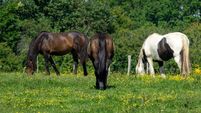Tripped up by the red tape
When farmers heard it was proposed to convert historical base year animal Direct Premia into area-based Direct Premia, they anticipated that the EU might include 2002 in its base year calculations, and set about increasing the value of their Direct Payment claims for 2002, he says.
Some went about this by switching to producing bulls rather than steers. Farmers generally became more conscious of submitting premium claims once animals had reached the minimum age limit, while others tried to purchase additional eligible animals for this purpose.










